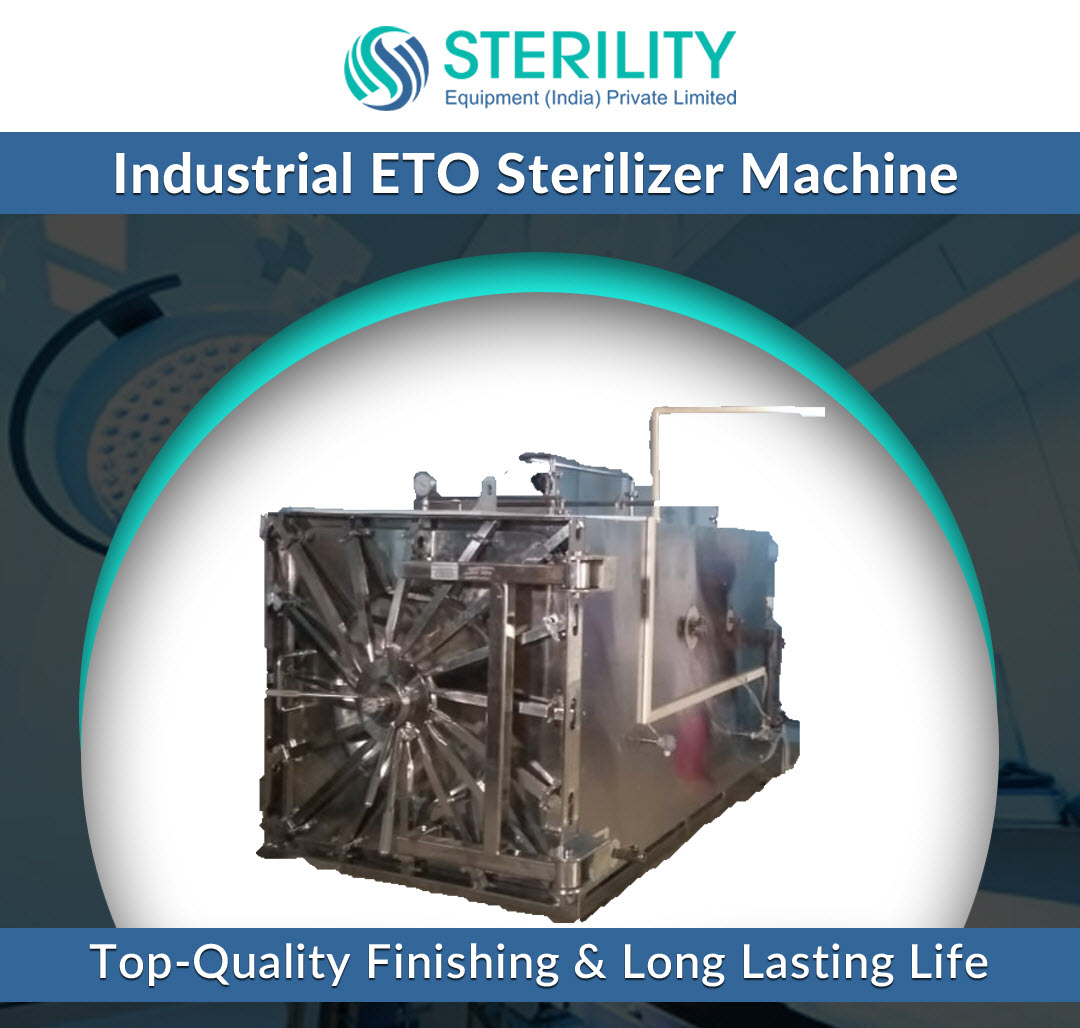Hospital Steriliser-Disinfection and sterilization of hospitals are essential to ensure that medical and surgical instruments do not transmit infectious pathogens. Sterilization is the complete elimination or destruction of all forms of microbial life and is accomplished in hospitals by physical and chemical processes. One such advanced method is the use of ETO Sterilisers to sterilize surgical equipment and hospital supplies that are heat sensitive or that cannot tolerate excess moisture. The ETO sterilization or the hospital sterilizers can be used to sterilize most rubber or plastic products like catheters and most resuscitation bags, anaesthesia masks, most fibre-optic instruments.
Process of ETO Sterilisation– The basic sterilization cycle consists of five stages like preconditioning and humidification, gas introduction, exposure, evacuation, and air washes, and takes approximately two to two and half hours which includes aeration time. Ethylene oxide sterilizers are comprised of a sterilizing chamber with an air inlet that includes a bacteria retentive filter, a steam inlet, gas conditioner, vacuum pump, ETO cylinder, and a vacuum system to vent the gas from the chamber to an exhausting drain directly out. The microbicidal activity of ETO steriliser is considered to be the result of the alkylation of protein, DNA, and RNA. Alkylation or the replacement of a hydrogen atom with an alkyl group, within cells prevents normal cellular metabolism and replication which can reduce the chances of spread of infection.
Operating steps– Whichever hospital equipment needs to be sterilized is cleaned of contaminants and rinsed with distilled water to remove any detergent or tap water residue. The items are then placed inside the sterilized chamber for the duration of the process.

Benefits of ETO Sterilisation–
- Low Temperature- With minimal temperature, the main advantage of this hospital sterilizer is that it can sterilize heat- or moisture-sensitive medical equipment without deleterious effects on the material used in the medical devices.
- High Efficiency- This sterilization equipment for the hospital can destroy any microorganisms including the most resistant of spores.
- Large Sterilisation Volume- It can handle a huge volume due to a sizeable chamber.
- Eliminates the spread of infection- There may be many unidentified substances on hospital equipment and surgical instruments. To avoid any risk of infection, sterilizing hospital equipment is the best solution as any breeding ground for surviving germs is eliminated.
- Safety of Equipment- In hospitals, high precision tools, and expensive instruments are used and for their long-term safety and longevity, the hospital sterilizer must be used so that they do not have a corrosion-related problem.
A hospital sterilizer is a key to the sterilization of medical instruments used in hospitals for everyday surgery procedures and patient services. It has become a modern medical care instrument and hospital sterilization companies, as well as manufacturers, specialize in fully automatic hospital sterilizers with high quality and high tech features. They have successfully been focusing on quality and setting high standards for the manufacture and designing of sterilization equipment for the hospital.
Importance of Hospital Sterilisers– WHO (World Health Organisation) strongly advises all medical facilities to sterilize instruments that may have come in contact with fluids that originate from inside the body. The sterilization for the hospital is vital for all parties involved like the doctors and patients alike. There should be a fail-safe precaution in a place where any (HAI- Healthcare-associated infection) is eliminated.





